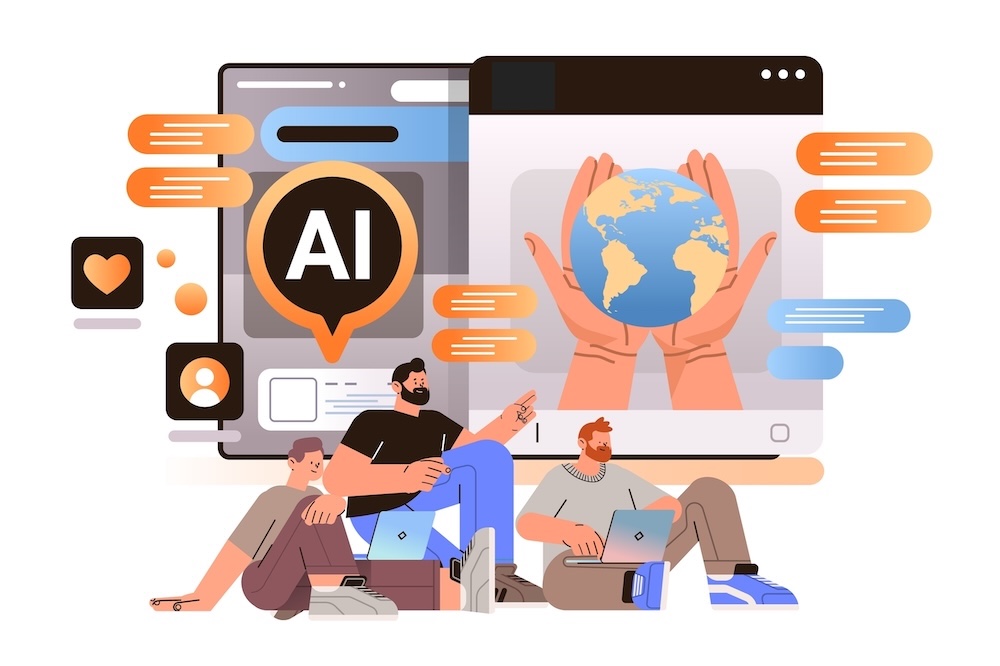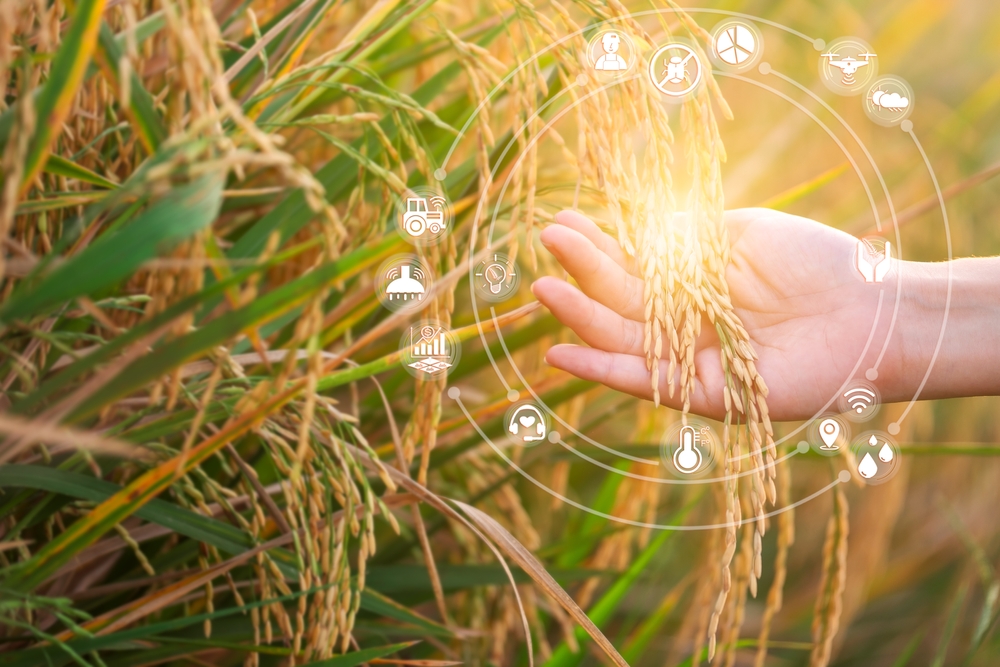As nonprofit organizations work tirelessly to tackle society’s most pressing challenges, a powerful ally is emerging from the world of technology: artificial intelligence. AI, or more specifically, the machine learning (ML) that fuels it, is not just being used in big tech. The nonprofit sector is also taking advantage of it to improve programs, predict needs, and drive meaningful impact. Let’s take a look at how AI is making a positive impact in addressing some of the world’s biggest issues.
What Is “AI for Good” and Why Does It Matter for Nonprofits?
“AI for good” refers to the use of artificial intelligence to advance humanitarian, environmental, and social missions. For nonprofits, this means using data-driven models to help make better decisions, serve communities more effectively, and scale their impact responsibly. At the heart of AI is machine learning – tools that allow systems to learn from patterns in data. For nonprofits, ML can help uncover insights that were previously inaccessible, automate repetitive tasks, and surface risks or opportunities earlier than traditional methods.
How Nonprofits Are Using AI Today
Identifying and Preventing Homelessness
Cities and nonprofits are using predictive models to flag individuals and families at risk of homelessness—sometimes even before a crisis hits. This enables early, targeted interventions that are both more compassionate and more cost-effective. For example, the Los Angeles Homeless Services Authority, LAHSA, partnered with researchers and data scientists to develop a predictive analytics tool called Risk Triage Tool (RTT). It uses data from public health, criminal justice, and social services to identify individuals most at risk of chronic homelessness. By flagging high-risk individuals before they lose housing, LAHSA can prioritize supportive interventions—such as housing vouchers or case management—helping prevent homelessness before it begins.
Responding to Climate and Environmental Crises
Nonprofits focused on conservation and climate action are using AI to monitor deforestation, track illegal fishing, and predict areas at high risk of drought or crop failure—helping them deploy resources where they’re needed most. One example of this is the Global Forest Watch. They now use satellite imagery and machine learning, in collaboration with Google AI, to monitor deforestation in near real-time. The system analyzes visual and geospatial data to detect illegal logging, forest fires, and land-use changes across the globe. These alerts allow governments and conservation groups to respond faster and more effectively to threats against critical ecosystems like the Amazon rainforest.
Expanding Access to Health Services
Machine learning is helping community health organizations detect diseases like tuberculosis and diabetic retinopathy using mobile phone-based imaging and diagnostics. In areas with limited access to specialists, these tools can be transformative. Zebra Medical Vision, partnered with NGOs in India and Africa, has developed machine learning algorithms that detect diseases such as tuberculosis from chest X-rays. In collaboration with nonprofit health partners in India and Africa, their AI tools help screen large populations in rural and underserved areas, where radiologists are scarce. This has enabled early diagnosis and treatment of TB, reducing transmission and improving public health outcomes.
Improving Emergency Response
AI tools can rapidly analyze social media posts, weather patterns, and satellite imagery during natural disasters, helping humanitarian organizations assess real-time needs and coordinate more effective responses. The UN’s Office for the Coordination of Humanitarian Affairs (OCHA) works with tools like Artificial Intelligence for Digital Response (AIDR),a machine learning platform developed by the Qatar Computing Research Institute. AIDR scans and categorizes thousands of social media posts during emergencies—like hurricanes or earthquakes—to help responders identify urgent needs, locations of damage, and on-the-ground conditions. This AI-powered insight helps humanitarian teams prioritize aid and allocate resources more efficiently during chaotic and rapidly evolving disasters.
Smarter Philanthropy and Program Evaluation
AI can also support grantmaking and donor management. Some foundations are exploring algorithmic tools to reduce bias, assess application quality at scale, and identify high-impact funding opportunities—all while saving staff time. Here are some notable examples:
CommunityForce – AI-Enhanced Grant Management: CommunityForce has integrated AI into its grant management platform to improve the fairness and efficiency of the grant application process. By analyzing historical data, their AI tools assess applications based on past trends, helping to eliminate bias and match applicants to the most relevant opportunities. This approach provides a more transparent, consistent, and fair process for all involved.
SmartSimple Cloud +AI – Streamlining Grant Processes: SmartSimple’s platform, SmartSimple Cloud +AI, assists philanthropic organizations in automating various aspects of grant management. Their AI tools can summarize grant applications, code and tag them for easier categorization, prescreen applications to identify high-potential candidates, and even assist in drafting applications. This automation reduces manual effort, enabling more efficient allocation of resources and faster decision-making.
Giving Compass – Promoting Equitable Funding: Organizations like Giving Compass utilize AI to guide donors toward high-impact, underfunded organizations, aiming to level the playing field in philanthropy. Their system provides tailored recommendations and curated educational content to inspire more impactful funding decisions. By focusing on equity, effectiveness, and systems change, Giving Compass works to ensure that smaller, community-led nonprofits receive the attention and funding they deserve.
DonorSearch – Enhancing Donor Engagement: Platforms like DonorSearch employ AI to help nonprofits identify and engage potential donors more effectively. Their AI tools analyze vast amounts of data to predict donor behavior, personalize communication, and optimize fundraising strategies. This data-driven approach enables nonprofits to build stronger relationships with donors and increase fundraising efficiency. These examples illustrate the transformative potential of AI in philanthropy, offering tools to make grantmaking more efficient, equitable, and impactful.
Ethical Considerations for Mission-Driven Organizations
All this being said, nonprofits must approach AI with care. Machine learning models are only as good as the data they’re trained on—and biased or incomplete data can lead to unintended harm. Transparency, equity, and community input should be built into any AI-driven process. AI users in the nonprofit sector should ask themselves:
- Is the data representative of the communities we serve?
- Do we understand how the model is making decisions?
- Are we using technology to empower people—not to replace or disempower them?
Responsible AI use means centering your values—equity, trust, and dignity—at every step.
Getting Started: What Can You Do?
You don’t need a full-time data science team to begin exploring AI for good. Many tools are increasingly accessible, and partnerships with universities, tech volunteers, or civic tech groups can help fill gaps in capacity. Start small:
- Use ML tools to forecast donation trends or volunteer engagement.
- Automate routine data entry or reporting tasks.
- Explore open-source AI projects aligned with your mission.
Final Thoughts
AI is not about replacing the human touch that defines nonprofit work—it’s about enhancing it. When guided by your mission and community needs, machine learning can help you do more of what you do best: creating positive, lasting change. The future of social good is data-informed, ethically grounded, and boldly collaborative. Nonprofits are not just welcome in the AI conversation—they’re essential to it!
For over forty years, CGNET has provided state-of-the-art IT services to organizations of all sizes, across the globe. We’ve done it all, from IT and cybersecurity assessments to cloud services management to generative AI user training. Want to learn more about who we are and how we might be able to help you? If so, check out our website or send us a message!





0 Comments